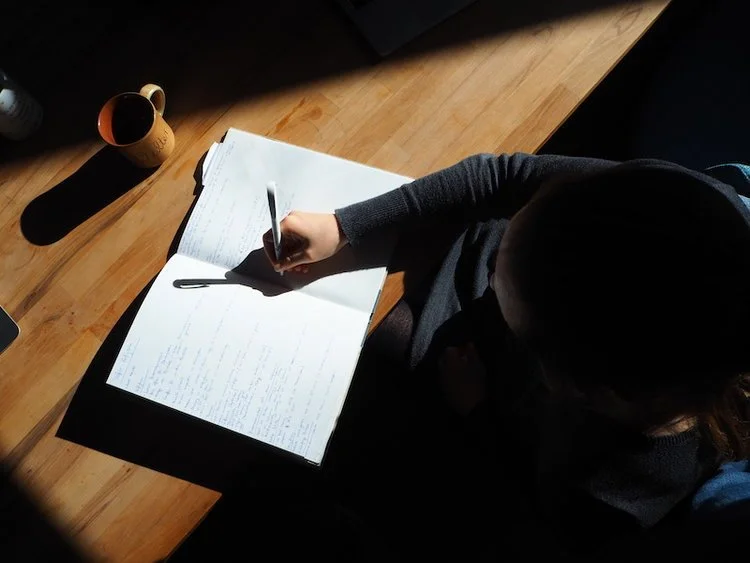Guided Journaling
What is this method good for?
Guided journaling is a self-reflective process, allowing participants to access deeper levels of self-knowledge, based on a set of prepared questions. The reflection is spontaneous and happens through the writing itself, by just writing down what emerges in the moment (instead of first thinking and reflecting, and then writing down the reflections).
What does the process look like?
Whenever you want to open a space for individual self-reflection, guided journaling is a wonderful tool to use. You can use it in workshops or in team retreats, after almost any kind of process or content. Prepare a set of questions that invite participants into a deep space of self-reflection and that are related to the process or content you plan to do before. Here are some examples:
What is it that you are appreciating now?
How do you want to contribute to making it happen?
What is holding you back?
What are your most vital sources of energy?
What are the seeds of future possibilities that you would like to plant and nurture now?
There are many many other possible questions. In choosing your questions, just make sure that they are open questions that invite for self-reflection (see link to further literature on how to find the powerful questions).
Sequence:
Prepare your set of questions beforehand
In the planned moment during your event or process, invite participants for a guided journaling exercise. Make sure everyone has a journal or paper and a pen
Depending on how many questions you want participants to reflect on (and how much time you want to take for this process), you can either write down all the questions on a flip chart visible for everyone. Or you can alternatively read them one by one during the process (recommended if you have many questions and want to guide your participants through a process that slowly takes them to a deeper level of self-reflection)
Invite participants to just write down what emerges spontaneously. The reflection happens through the writing itself, there is no need to phrase everything perfectly beforehand. Whatever is present, just start with that and see where it takes you. Make it clear that the journaling is personal, no one has to share their notes in public
Indicate the time that will be available for this exercise (usually it is better to not give too much time, this can help participants to get into a space of spontaneous writing, instead of thinking first and then writing down the reflections)
Optionally, after the guided journaling you can invite participants to share their key insights or what is present in them now with the group in a sharing circle, or in small groups or pairs
Journaling can also be used as a longer process in itself, when you have a longer set of questions that build on each other and that slowly take the participants to deeper levels of reflection. For an example, have a look at the U-Journaling Practice from the Presencing Institute.
Needed time/ materials/ people etc.
Time: according to your needs. For a reflection after another exercise or process with a set of 3 to 5 questions, usually 10 to 15 minutes is enough. For a longer guided journaling process like the U-Journaling Practice, at least 45 minutes are needed
Materials: a flip chart paper with the questions, a journal / paper and pen for each participant
People: journaling can be used in groups of any size
Place: it helps if the room is quiet and there are not too many disturbing or distracting noises
Our Experience with this Method
At collaboratio helvetica, we use guided journaling in many of our spaces, whenever we want to open a space for self-reflection: during our Dialogue spaces, in our Social Labs, and also in our own team retreats.
Sources and further literature
Sarah Friederich is part of the Catalyst Lab design and hosting team at collaboratio helvetica and in this role supports the implementation of the Sustainable Development Goals (SDGs). As a facilitator (Theory U, Art of Hosting, Dialogue) she supports diverse projects in the area of social innovation with design and facilitation of participatory events and group processes. The promotion of new forms of collaboration and systemic change are an integral part of her work. For many years, she has gained experience working for NGOs and social organisations in the field of environmental and social justice in Switzerland and Bolivia.
In addition to her work with collaboratio helvetica and as a facilitator, Sarah supports people as a coach in their personal development processes, especially in the process of grieving after the loss of a loved one.


